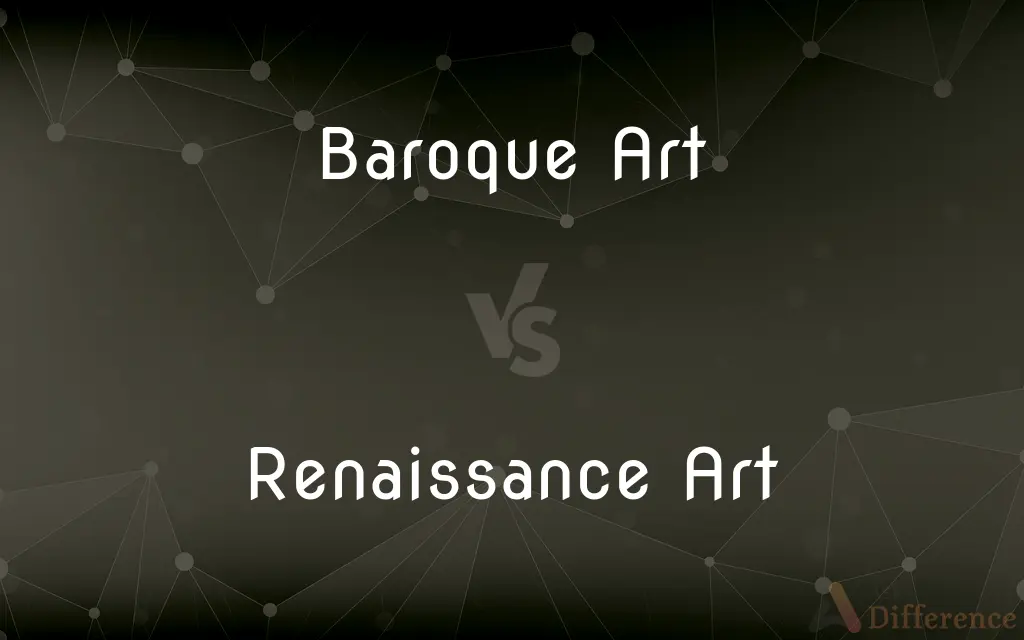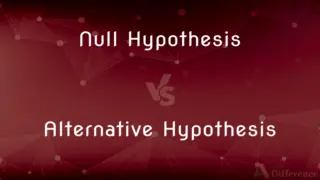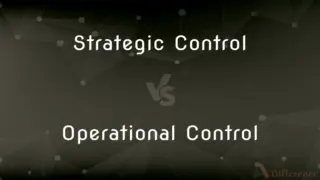Baroque Art vs. Renaissance Art — What's the Difference?
By Tayyaba Rehman — Published on December 19, 2023
Baroque Art is ornate and emotionally intense; Renaissance Art emphasizes proportion and harmony.

Difference Between Baroque Art and Renaissance Art
Table of Contents
ADVERTISEMENT
Key Differences
Baroque Art emerged in the 1600s as a reaction against the Renaissance's emphasis on clarity and harmony. Renaissance Art, flourishing between the 14th and 17th centuries, marked the rebirth of classical ideals and techniques.
Baroque Art is characterized by dramatic contrasts, deep coloration, and dynamic compositions, while Renaissance Art is known for its balanced compositions and a focus on individual figures.
Baroque Art often sought to evoke emotional responses from viewers, employing techniques like chiaroscuro. In contrast, Renaissance Art focused on representing the world in a clear, rational manner.
Baroque Art can be seen as more extravagant and elaborate, emphasizing grandeur and opulence. On the other hand, Renaissance Art is rooted in realism and a meticulous attention to detail.
While both Baroque Art and Renaissance Art were deeply rooted in religious themes, the former often presented these subjects in a more theatrical, dramatic manner, whereas the latter portrayed them with a serene, timeless quality.
ADVERTISEMENT
Comparison Chart
Period
1600s to mid-1700s
14th to 17th century
Characteristics
Dramatic, emotional, ornate
Harmonious, proportionate, realistic
Techniques
Chiaroscuro, dynamic compositions
Linear perspective, chiaroscuro
Themes
Grandeur, opulence, theatricality
Humanism, classical ideals
Key Artists
Caravaggio, Bernini
Leonardo da Vinci, Michelangelo
Compare with Definitions
Baroque Art
Often intertwined with religious themes, but presented in a theatrical manner.
The intricate altars in many European churches demonstrate the religious aspect of Baroque Art.
Renaissance Art
An artistic movement emphasizing classical ideals and techniques.
Da Vinci's Mona Lisa is a quintessential piece of Renaissance Art.
Baroque Art
A movement that emerged in the 1600s, emphasizing drama and grandeur.
The grand sculptures in Rome's piazzas are great representations of Baroque Art.
Renaissance Art
Flourished between the 14th and 17th centuries, marking a rebirth of art and culture.
Michelangelo's Sistine Chapel ceiling showcases the peak of Renaissance Art.
Baroque Art
An art style characterized by ornate details and emotional intensity.
Caravaggio's paintings epitomize the emotional depth of Baroque Art.
Renaissance Art
Embraces humanism and the exploration of the natural world.
Botticelli's The Birth of Venus is emblematic of the humanist ideals in Renaissance Art.
Baroque Art
Recognized for its bold contrasts and dynamic compositions.
Bernini's Ecstasy of Saint Teresa displays the dynamic nature of Baroque Art.
Renaissance Art
Known for its realistic representation and attention to individual figures.
Raphael's School of Athens demonstrates the detailed figures characteristic of Renaissance Art.
Baroque Art
Celebrates opulence and the spectacular, often in large-scale works.
The Palace of Versailles is a monumental example of Baroque Art and architecture.
Renaissance Art
Utilized techniques like linear perspective to achieve depth and proportion.
Brunelleschi's architecture in Florence displays the linear perspective techniques of Renaissance Art.
Common Curiosities
When did Renaissance Art emerge?
Renaissance Art emerged between the 14th and 17th centuries.
What are some techniques associated with Renaissance Art?
Techniques like linear perspective and chiaroscuro are associated with Renaissance Art.
Is Baroque Art known for its emotional intensity?
Yes, Baroque Art is characterized by its emotionally intense and dramatic nature.
What is the main time period for Baroque Art?
Baroque Art primarily flourished in the 1600s to mid-1700s.
Who are notable artists from the Baroque Art period?
Notable artists include Caravaggio, Bernini, and Rubens, among others.
How does Baroque Art typically depict religious themes?
Baroque Art often presents religious themes in a theatrical, dramatic manner.
How is chiaroscuro used differently in Baroque Art compared to Renaissance Art?
In Baroque Art, chiaroscuro is often used to enhance drama and emotion, while in Renaissance Art, it contributes to a sense of depth and realism.
Was humanism a significant theme in Renaissance Art?
Yes, humanism, which emphasized the value and agency of human beings, was a central theme in Renaissance Art.
Which art movement celebrates opulence and the spectacular?
Baroque Art celebrates opulence and the spectacular, often in large-scale works.
What's a defining characteristic of Renaissance Art?
Renaissance Art is known for its emphasis on harmony, proportion, and realism.
Are both Baroque Art and Renaissance Art deeply rooted in religious themes?
Yes, both styles frequently depict religious subjects but in distinct manners.
Can both art styles be seen in architecture as well?
Yes, both Baroque Art and Renaissance Art influenced architectural designs and can be seen in various structures across Europe.
How did Renaissance Art portray the human form?
Renaissance Art portrayed the human form with a focus on proportion, anatomy, and individualized features.
Which art style is more ornate and elaborate?
Baroque Art is typically more ornate and elaborate than Renaissance Art.
Which art movement emerged as a reaction to the other?
Baroque Art emerged as a reaction against the clear and harmonious ideals of Renaissance Art.
Share Your Discovery

Previous Comparison
Null Hypothesis vs. Alternative Hypothesis
Next Comparison
Strategic Control vs. Operational ControlAuthor Spotlight
Written by
Tayyaba RehmanTayyaba Rehman is a distinguished writer, currently serving as a primary contributor to askdifference.com. As a researcher in semantics and etymology, Tayyaba's passion for the complexity of languages and their distinctions has found a perfect home on the platform. Tayyaba delves into the intricacies of language, distinguishing between commonly confused words and phrases, thereby providing clarity for readers worldwide.
















































